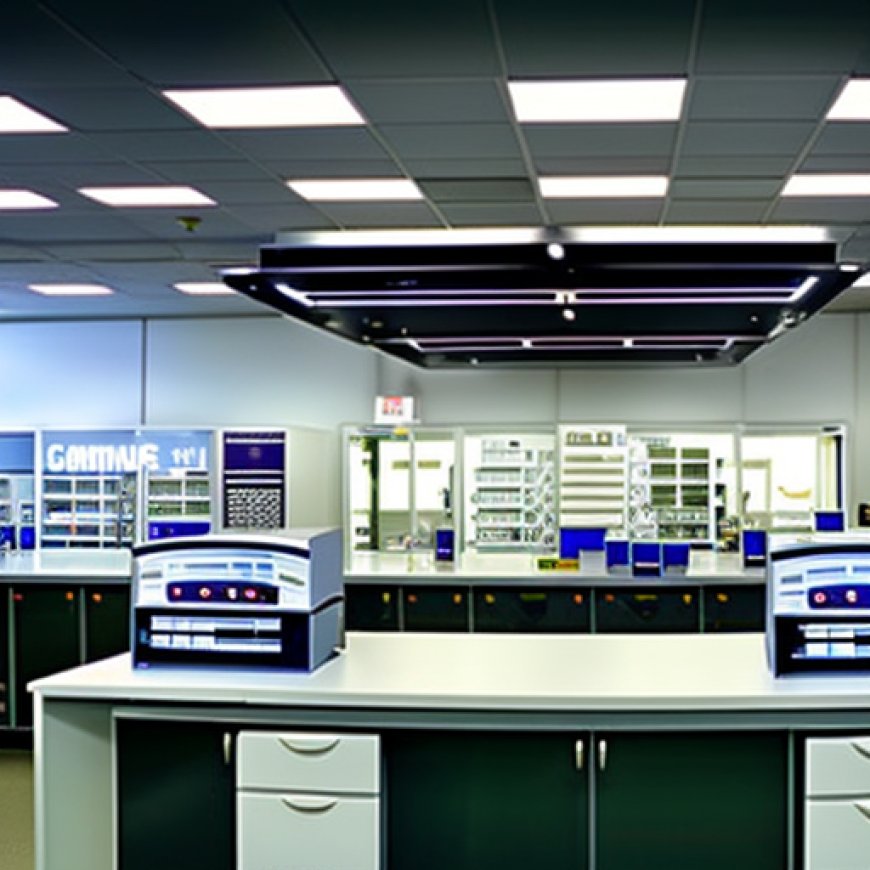Chemours opens a new lab in Newark, Del. to expand EV battery operations


Chemours Opens Battery Innovation Center in Delaware
Contributing to the Sustainable Development Goals
This story is part of the WHYY News Climate Desk, bringing you news and solutions for our changing region.
From the Poconos to the Jersey Shore to the mouth of the Delaware Bay, what do you want to know about climate change? What would you like us to cover? Get in touch.
- Chemours chemical company has opened its new Battery Innovation Center in Newark, Delaware.
- The center focuses on creating materials for manufacturing lithium-ion batteries for electric vehicles (EVs).
- The company’s new process for producing EV battery materials aims to save money and reduce energy use.
Chemours utilizes a process called “dry electrocoating,” which requires fewer tools and eliminates the need for hazardous solvents. This not only reduces energy consumption but also lowers the cost of manufacturing EV batteries while eliminating the use of toxic solvents.
The technology developed by Chemours also improves battery life, increasing the mileage of EVs by 150 miles. This advancement contributes to the broader adoption of electric vehicles, ultimately reducing the carbon footprint of the transportation industry.
Gas-powered vehicles are major contributors to fossil fuel emissions and climate change. To combat this, there is a governmental push, including tax incentives, to promote the use of electric vehicles, which significantly reduce emissions.
Challenges and Environmental Impact
- The cost of manufacturing and purchasing electric vehicles remains a significant barrier to their widespread adoption. In June, the average cost of an electric car was $56,371, compared to $48,644 for gas-powered cars.
- While EVs offer environmental benefits, the batteries used to power them contain toxic chemicals known as PFAS (perfluoroalkyl and polyfluoroalkyl substances), also referred to as “forever chemicals.”
- Battery manufacturing facilities contribute a significant amount of PFAS pollution, which poses serious health risks.
- Chemours, despite its history of contaminating drinking water with PFAS, is now using Teflon, a subgroup of PFAS, for battery production.
- Chemours has committed to reducing its PFAS emissions by 50% and aims to achieve a 99% reduction over the next six years.
Despite the environmental challenges associated with EV batteries, the opening of Chemours’ Battery Innovation Center marks a significant step towards achieving the Sustainable Development Goals (SDGs). The center’s focus on developing sustainable and high-performance lithium-ion batteries aligns with SDG 7 (Affordable and Clean Energy) and SDG 13 (Climate Action).
By reducing energy consumption, lowering manufacturing costs, and improving battery life, Chemours contributes to SDG 9 (Industry, Innovation, and Infrastructure) and SDG 12 (Responsible Consumption and Production).
Conclusion
The opening of Chemours’ Battery Innovation Center in Delaware showcases the company’s commitment to developing sustainable solutions for the electric vehicle industry. Through their innovative processes and materials, Chemours aims to make electric vehicles more affordable, efficient, and environmentally friendly.
While challenges remain, such as the environmental impact of EV batteries, Chemours’ efforts align with the SDGs and contribute to the global transition towards a more sustainable and low-carbon future.
SDGs, Targets, and Indicators
1. Which SDGs are addressed or connected to the issues highlighted in the article?
- SDG 7: Affordable and Clean Energy
- SDG 9: Industry, Innovation, and Infrastructure
- SDG 11: Sustainable Cities and Communities
- SDG 12: Responsible Consumption and Production
- SDG 13: Climate Action
2. What specific targets under those SDGs can be identified based on the article’s content?
- SDG 7.2: Increase substantially the share of renewable energy in the global energy mix.
- SDG 9.4: Upgrade infrastructure and retrofit industries to make them sustainable.
- SDG 11.6: Reduce the adverse per capita environmental impact of cities.
- SDG 12.2: Achieve sustainable management and efficient use of natural resources.
- SDG 13.2: Integrate climate change measures into national policies, strategies, and planning.
3. Are there any indicators mentioned or implied in the article that can be used to measure progress towards the identified targets?
- Percentage of renewable energy in the global energy mix.
- Investment in sustainable infrastructure.
- Reduction in energy consumption and emissions in the manufacturing process.
- Reduction in the cost of manufacturing electric vehicle batteries.
- Reduction in the carbon footprint of the automotive industry.
- Reduction in the cost of electric vehicles.
- Reduction in PFAS emissions and pollution.
Table: SDGs, Targets, and Indicators
| SDGs | Targets | Indicators | ||
|---|---|---|---|---|
| SDG 7: Affordable and Clean Energy | 7.2: Increase substantially the share of renewable energy in the global energy mix. | Percentage of renewable energy in the global energy mix. | ||
| SDG 9: Industry, Innovation, and Infrastructure | 9.4: Upgrade infrastructure and retrofit industries to make them sustainable. | Investment in sustainable infrastructure. | ||
| SDG 11: Sustainable Cities and Communities | 11.6: Reduce the adverse per capita environmental impact of cities. | Reduction in energy consumption and emissions in the manufacturing process. | ||
| SDG 12: Responsible Consumption and Production | 12.2: Achieve sustainable management and efficient use of natural resources. | Reduction in the cost of manufacturing electric vehicle batteries. | ||
| SDG 13: Climate Action | 13.2: Integrate climate change measures into national policies, strategies, and planning. | Reduction in the carbon footprint of the automotive industry. | Reduction in the cost of electric vehicles. | Reduction in PFAS emissions and pollution. |
Source: whyy.org








